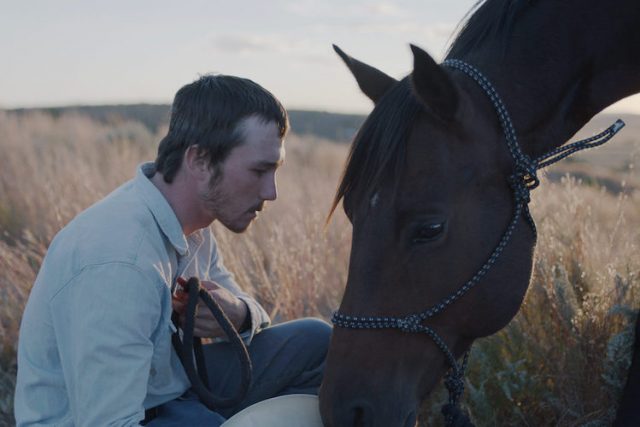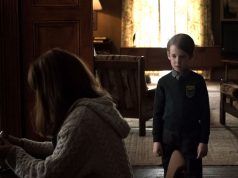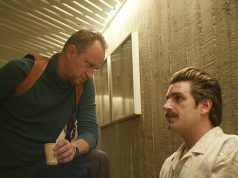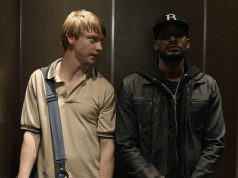
Chloe Zhao was born in Beijing and is not a cowgirl, but “The Rider,” which she wrote and directed, could hardly feel more authentic if she’d grown up among the hardscrabble South Dakotans it portrays. No doubt it helps to have real rodeo riders playing versions of themselves in a story based on their own experiences, but there’s also an art to choosing the details that best convey character and location. That includes sets and costumes, like the dingy, dilapidated trailer the family lives in, with blankets for curtains, dirty clothes on the kid, where you can tell at a glance that this family’s mother is absent. Casting is important too, and among the skinny cowboy types are some rough, weathered men with physical injuries — a hook for a hand, a burned face — that are never mentioned directly yet tell us a lot about life here in the Badlands, i.e., that it’s grueling and painful and the horses are always trying to kill you.
The story is about Brady Blackburn, a young rodeo star who suffered a potentially career-ending brain injury not long ago and has a head full of staples when we meet him. He’s played by Brady Jandreau, whose biography is the same. (Zhao was looking for a story to tell about this way of life when Jandreau’s head was stomped by a bronco, ending his rodeo career and giving Zhao her story.) The fictional Brady lives with his drunk father, Wayne (actual father Tim Jandreau), and autistic 15-year-old sister, Lilly (actual autistic sister Lilly Jandreau), in the aforementioned crappy trailer, trying to get well so he can get back in the saddle.
Brady has lost dexterity in his right hand and is prone to small seizures since the accident, but to stop riding altogether doesn’t seem like a viable option. What else would he do? Still, he bristles when his rodeo-riding friends talk about having to “cowboy up” and “ride through the pain.” None of them have ever been injured this seriously. They’re talking about the only life they know, but they’re talking to someone who now knows more than they do.
Offering a different perspective is another friend, Lane, who had an even worse rodeo accident that left him mostly paralyzed and unable to speak. (He’s played by Lane Scott, who, like Jandreau, actually went through this. The footage we see of pre-accident Lane is real.) Brady was luckier, and his frequent, tender visits with Lane make him think twice about pushing his luck and getting back on a horse. When he does try it, a seizure and further injury make him think a third time. But again: What else can he do?
That’s the conflict at the heart of this beautiful and understated drama. Brady is torn between traditional notions of masculinity, his love of horses, the community’s assumption that of course he’s not done riding, and the facts of his physical condition. His efforts to find a new path lead to some sublime moments: a peaceful ride on his own horse; a pure, almost magical sequence of breaking another horse with affection and patience.
It’s apparent from the first scene that Jandreau isn’t an actor, but his naturalism works to the movie’s advantage. Looking like a dull-eyed Josh Hartnett, he conveys sensitivity and humility not by Acting but by revealing his true feelings, or a slightly modified form of them. It would be a heartfelt and convincing performance even if you didn’t know it was based on fact, but that knowledge makes it all the more piercing. I wept during the last 20 minutes of the movie, overwhelmed by the heartbreak and humanity on display. It’s not lost on Brady that if he were a horse, he wouldn’t have gotten this second chance. “I got hurt like [a horse] did,” he tells Lilly, “but I’m a person, so I got to live.” Sure, you’re alive, but now what? There’s the rub.
A- (1 hr., 43 min.; )





